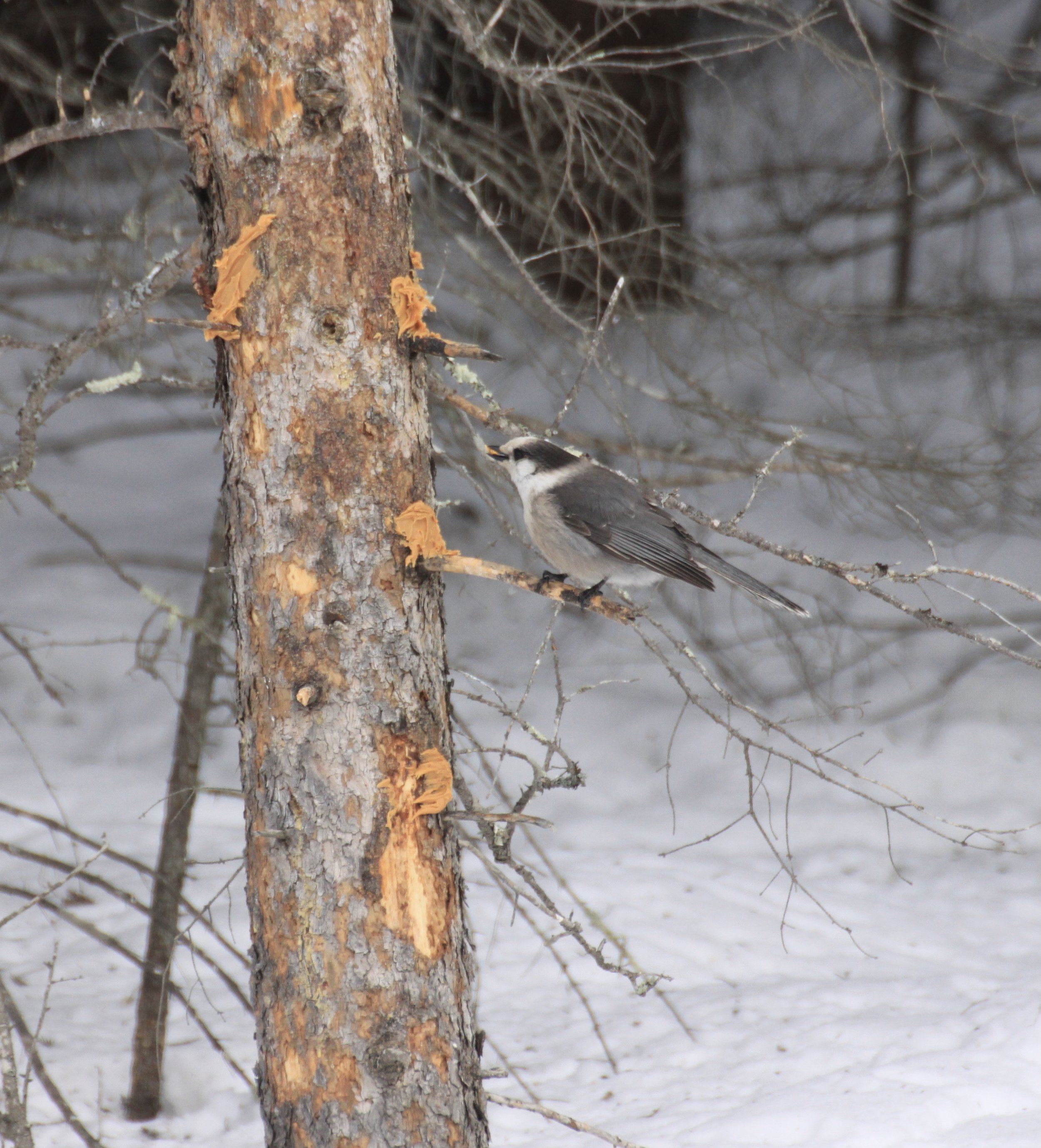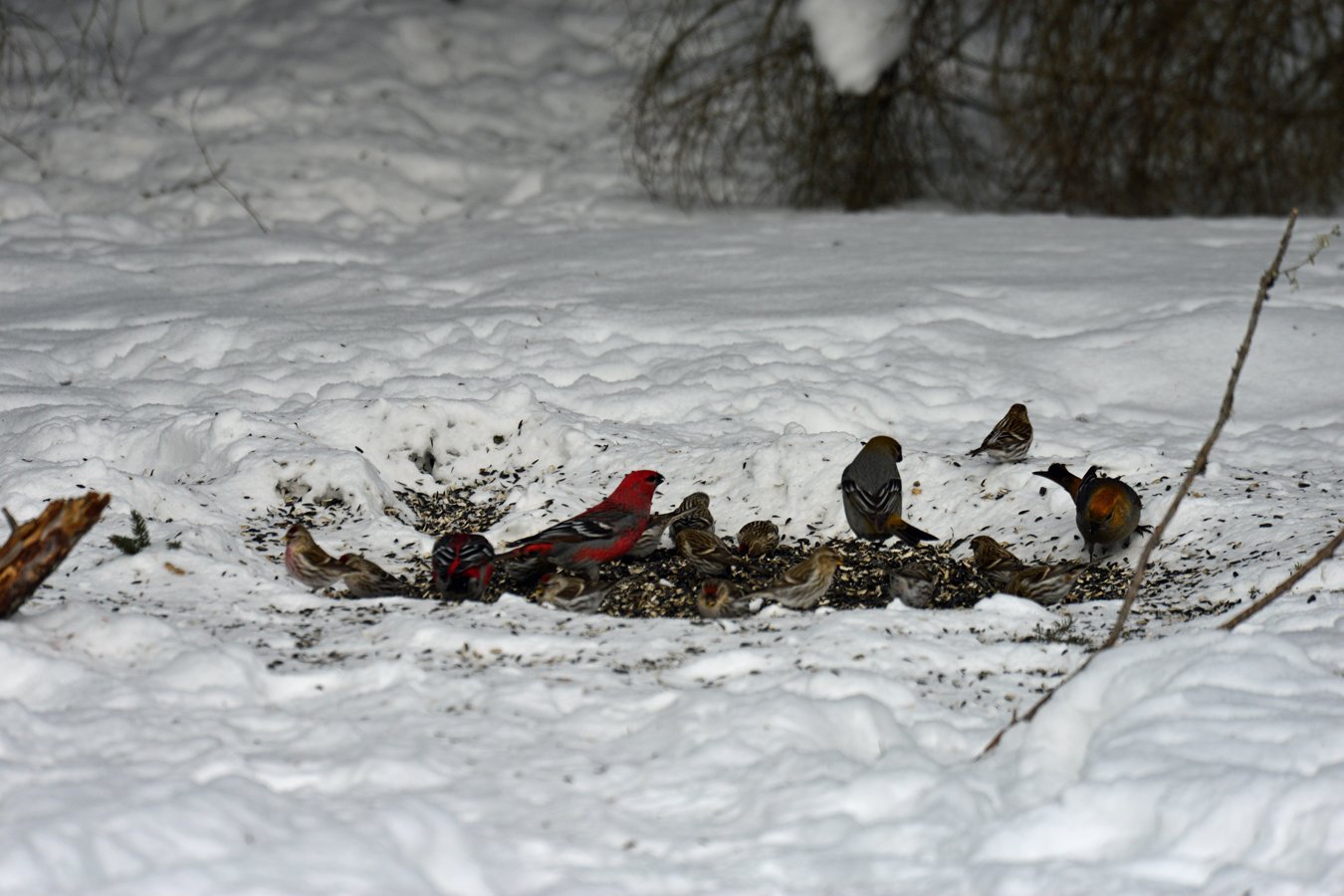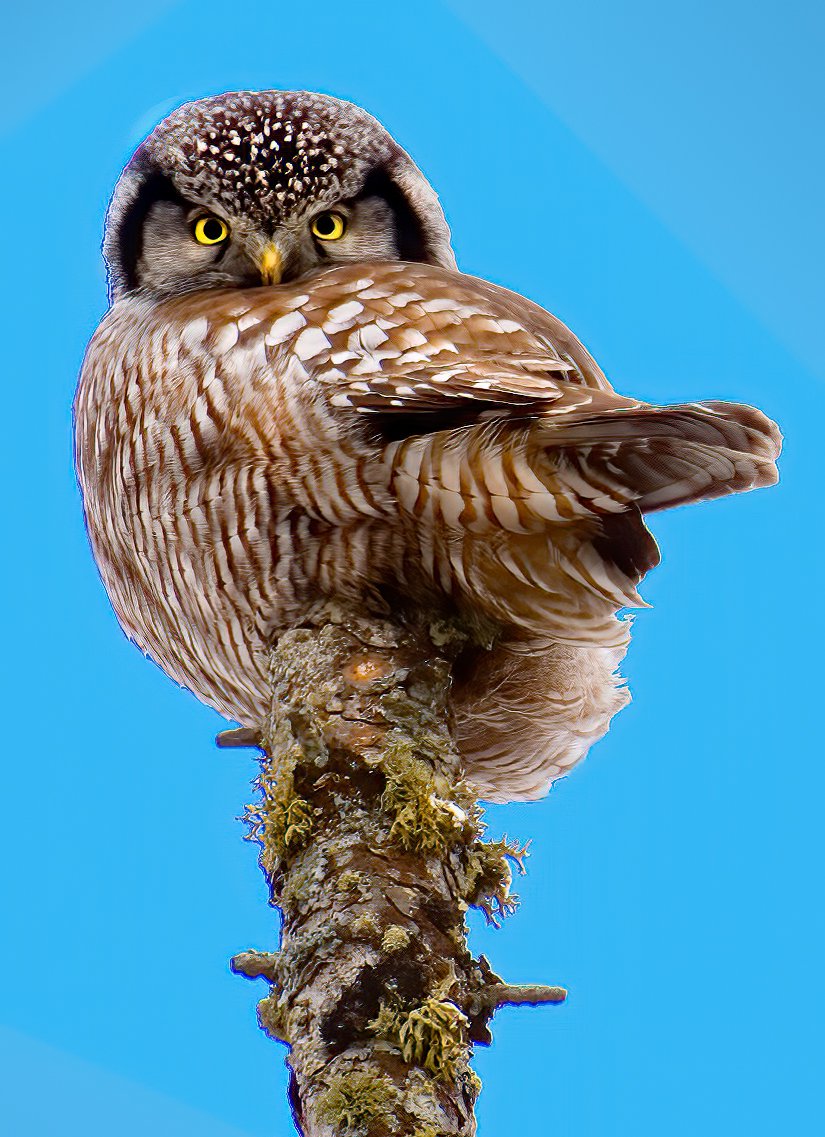Photo by Richard Armstrong
Sue and Mark were going to take a winter vacation by train to a place the native Blackfeet Indians of Glacier National Park called the “always summer land” Tucson, Arizona. However, with the virus still raging, they decided to head north to look for snow: snow buntings, snowshoe hares, snowy owls, and ermine, long-tailed weasels that turn white in winter. We also wanted to see other northern Minnesota wildlife that inhabit the area.
Goose Pond friends Richard Armstrong and Monica Hall, both wildlife photographers who make frequent pilgrimages to Sax-Zim Bog, highly recommended visiting the area in the middle of winter. So the two of us, along with Curt and Arlys Caslavka headed north in the last week of January in search of a winter adventure. The Caslavkas first suggested that we travel to the bog and they were anxious to return there after a 15-year hiatus. Sax-Zim Bog is 315 miles northwest of Goose Pond and 30 miles northwest of Duluth. It is a birding hotspot even in the winter! We were greeted by 18-24 inches of snow and bone-chilling temperatures (-22 degrees for the low the first day).
The bog is about 300 square miles in size and the Friends of Sax-Zim Bog do a great job of providing maps, weekly reports, and feeders brimming with a variety of seeds and suet at the Welcome Center. The Friends of Sax-Zim Bog are purchasing 1,100 acres of land this summer bringing their total acres protected to over 4,700. Over 25,000 acres are owned by the DNR within three Wildlife Management Areas and a State Forest, and in a privately owned Wetland Bank.
Feeder systems are found along roads and entrances to parking lots that have shoveled “bogwalks.” Seeds provided in the feeders included black oil sunflowers, nyjer, and suet. Locals also provide driveby feeders and some have bluebird boxes where you can make a financial donation for bird seed. Some feeding stations included deer carcasses which were especially attractive to chickadees, woodpeckers, and jays.
One of the best sightings was a Boreal Chickadee. These little sprites are known to be the “last birds to join the party” at feeding stations. Local birders told us that shy Boreal Chickadees do not come to feeders but will come to peanut butter. At one feeding station we visited, a couple of tree trunks were slathered with peanut butter by volunteers and we waited patiently for our target bird. An hour and a half later we were rewarded as one brown headed little guy appeared and all in our group were extremely excited. Nice find!




While waiting for the Boreal Chickadee to appear we viewed Common Redpolls, Gray Jays, and Pine Grosbeaks ground feeding on scattered seeds when Curt called out “snowshoe hare!” It came running out of the woods, crossed the road behind the car, and within seconds vanished in the forest.
One area we really liked was the Winterberry Bog and Bob Russell Bogwalk. There were feeders and deer rib cages at the corner of the property and along the boardwalk. There is no development in the area. On the bogwalk we found a Brown Creeper on a deer carcass, and Downy and Hairy Woodpeckers. We looked for the Black-backed Woodpecker in the dead spruce but had no luck.
Bob Russell was a frequent visitor to Goose Pond when he attended the UW while working on his masters. We liked to talk with Bob about all birds including two of his favorites, the Black Rail and Ivory-billed Woodpecker. Bob worked for the Fish & Wildlife Service in the Twin Cities. He participated in both the Minnesota and Wisconsin Breeding Bird Atlas projects.
Overall, we found 27 species including 4 (high day count) Ruffed Grouse, 2 Northern Goshawks, 54 Wild Turkeys (rare birds in northern MN), 4 Northern Shrikes, 10 Canada Jays, 21 Common Ravens, 144 Black-capped Chickadees, 65 Pine Grosbeaks, 385 Common Redpolls (most abundant bird), 1 Hoary Redpoll, and 64 Evening Grosbeaks. There are only 12 birds listed as common on their bird checklist and we missed the Bald Eagle.
Photos below by Mark Martin and Curt Caslavka







We learned where a Snowy Owl had been seen and were pleased to find the Snowy Owl along with four Snow Buntings. We searched for the 4-5 Great Gray Owls that had been recently seen, but had no luck on that front.
Mark and Curt chose the Evening Grosbeak as their favorite birds, Sue picked the Black-billed Magpie observed near a farm with cattle, and Arlys liked the Pine Grosbeaks.
Winter birds found on the Sax-Zim Bog winter bird list that we will have to find on a return trip included Sharp–tailed Grouse, Northern Hawk Owl, Great Gray Owl, Boreal Owl, Black-backed Woodpecker, Bohemian Waxwing, and White-Winged Crossbill. Mammals that we missed included gray wolves and American martens.
Photos below by Monica Hall.




Photos below by Richard Armstrong



We refer to people from Wisconsin who go south for the winter as “snowbirds.” We went north looking for snowbirds and were not disappointed. We spent cold days on frozen roads, driving many miles in search of birds who only come down from the north for a short time. We enjoyed staying at a warm AirBnB, spending time with good friends, and enjoying good food in the evenings.
And we would do it again! Sax-Zim Bog would be a great place to count birds on the Great Backyard Bird Count February 18-21. The bog is also an excellent place to visit in summer to look for nesting warblers and search for orchids.
Written by Mark Martin and Susan Foote-Martin, Goose Pond Sanctuary resident managers, and Curt and Arlys Caslavka, Goose Pond volunteers
Photography Monica Hall and Richard Armstrong





